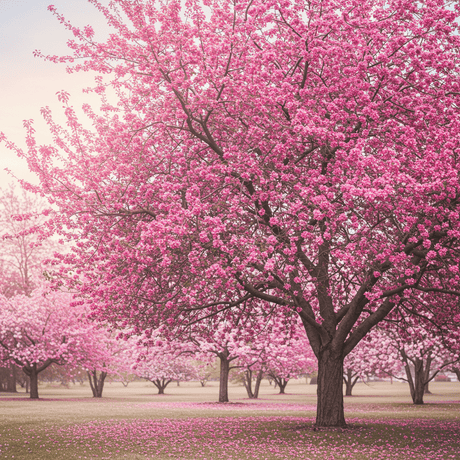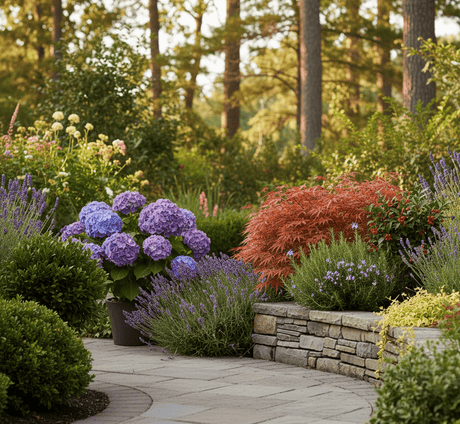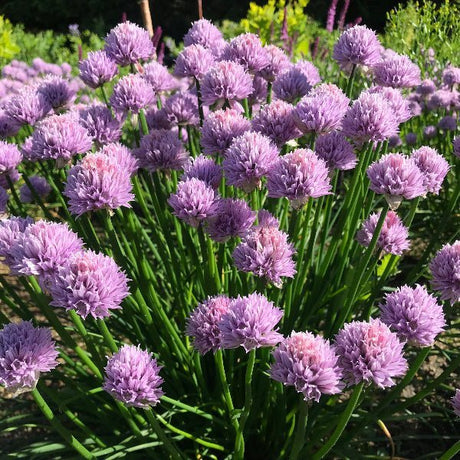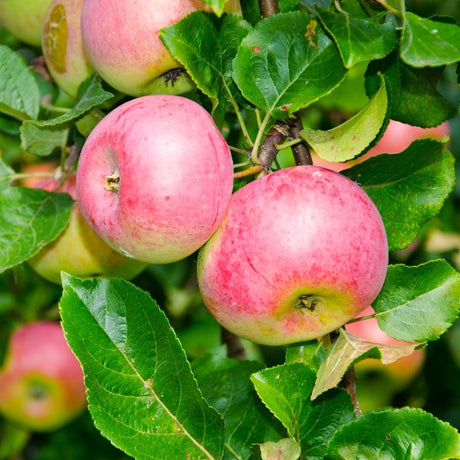Buckeye® Gala Apple Tree
Malus x 'Buckeye Gala'
- Stay Protected with Plant Sentry ™
Buckeye® Gala Apple Tree is backordered and will ship as soon as it is back in stock.
Plant Sentry™
Plant Sentry™

Plant Sentry™ Protected
Your order is protected by our compliance system that:
- Prevents restricted plants from shipping to your state
- Ensures plants meet your state's agricultural requirements
- Protects gardens from invasive pests and diseases
Delivery and Shipping
Delivery and Shipping
Delivery and Shipping
Fast, Safe Plant Delivery
Ships in 3-4 business days • Tracking provided • Weather protected
| Under $50 | $9.99 |
| $50 - $99.99 | $14.99 |
| $100 - $149.99 | $16.99 |
| $150 - $198.99 | $24.99 |
| $199+ | FREE |
✓ Zone-specific timing • ✓ Professional packaging • ✓ Health guarantee
Understanding Plant Options
Nature Hills offers plants in two main formats:
- Container Plants: Grown in pots with soil, sized by container volume and plant age
- Bare Root Plants: Dormant plants without soil, sized by height measurements
Container Plant Sizes
Container sizes indicate plant age and growing capacity rather than liquid volume equivalents. Our containers follow industry-standard nursery "trade gallon" specifications, which differ from standard liquid gallon measurements.
Young Plants (6 months to 18 months old)
| Container Size | Actual Volume | Metric Equivalent |
|---|---|---|
| 2" x 2" x 3" | 0.18 - 0.21 dry quarts | 0.20 - 0.23 dry liters |
| 4" Container | 0.31 - 0.87 dry quarts | 0.35 - 0.96 dry liters |
| 4.5" Container | 0.65 dry quarts | 0.72 dry liters |
| 6" Container | 1.4 dry quarts | 1.59 dry liters |
| 1 Quart | 1 dry quart | 1.1 dry liters |
| 5.5" Container | 1.89 dry quarts | 2.08 dry liters |
Established Plants (18 months to 2.5 years old)
| Container Size | Actual Volume | Metric Equivalent |
|---|---|---|
| 2 Quart | 2 dry quarts | 2.2 dry liters |
| #1 Container | 2.26 - 3.73 dry quarts | 2.49 - 4.11 dry liters |
| 5" x 5" x 12" | 3.5 - 4.3 dry quarts | 3.85 - 4.74 dry liters |
Mature Plants (2-4 years old)
| Container Size | Actual Volume | Metric Equivalent |
|---|---|---|
| #2 Container | 1.19 - 1.76 dry gallons | 5.24 - 7.75 dry liters |
| #3 Container | 2.15 - 2.76 dry gallons | 8.14 - 12.16 dry liters |
Large Plants (3-5 years old)
| Container Size | Actual Volume | Metric Equivalent |
|---|---|---|
| #5 Container | 2.92 - 4.62 dry gallons | 12.86 - 20.35 dry liters |
| #6 Container | 5.25 - 6.01 dry gallons | 23.12 - 26.42 dry liters |
| #7 Container | 5.98 - 6.53 dry gallons | 26.34 - 28.76 dry liters |
Bare Root Plants
Bare root plants are sold by height from the root system to the top of the plant. Plants may exceed minimum height requirements.
Common Sizes:
- Trees: 1 foot, 2 feet, 3 feet, 4 feet, 5 feet, 6 feet
- Shrubs & Perennials: 1 foot, 18 inches, 2 feet
Important Notes
Container Volume Specifications
- Trade Gallon Standard: Our containers follow industry-standard "trade gallon" specifications established by the American National Standards Institute (ANSI Z60.1) for nursery stock
- Volume Variations: Actual soil volume may vary due to plant root systems and growing medium settlement
- Age Indicators: Container size primarily indicates plant age and maturity rather than liquid volume equivalents
Growing Conditions
- Plant size can vary based on variety and growing conditions
- Container size helps indicate plant maturity and establishment level
- Larger containers generally mean more established root systems and faster landscape establishment
Seasonal Availability
- Bare root plants are available seasonally when dormant
- Container plants are available throughout the growing season
- Specific varieties may have limited availability in certain sizes
Questions?
For questions about specific plant sizes or availability, please contact our plant experts who can help you choose the right size for your landscape needs.
Plant Highlights
Buckeye® Gala Apple Tree highlights at a glance!
-
Botanical Name
-
Brand
-
Growing Zones5, 6, 7, 8
-
Growth RateModerate
-
Mature Height
-
Mature Width
-
Leaf Color
-
Flower Color
-
Fall Color
-
Pollinator FriendlyYes
-
Bloom PeriodEarly Spring, Late Spring
-
Harvest Time
-
FragrantYes
Characteristics
Where To Plant
When To Prune
- Late Winter
Water & Moisture Needs
- Moderate
Sunlight Needs
Soil Needs
- Well Drained
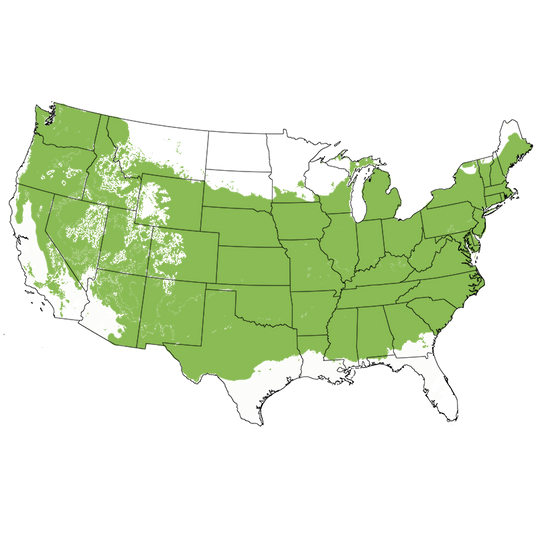
Growing Zones 5-8
Big Harvest, Beautiful Fruit Buckeye® Gala Apple Tree
- Beautiful Red Fruit & Burgundy Red Stipes
- Tart & Tangy & Sweet Apples
- Crisp, Juicy Creamy White Flesh
- Early Fruit Harvest
- Medium Sized Fruit
- Pinkish Buds Open to White Blooms
- Fragrant Flowers Attracts Pollinators
- Ripens in August
- Fast-Growing
- High Yield!
- Keeps in Storage Months!
- 500-700 Chill Hours
The Buckeye® Gala Apple tree (Malus x 'Buckeye Gala') has been a favorite apple variety for over 50 years. Why? They're a tasty choice for both the backyard and commercial grower. As its name implies, the Buckeye Gala Apple originated in Ohio and is now grown across the globe.
The Buckeye Gala colors early, even in some shade, and because of their uniform coloration, they are good candidates for single picking. A full red apple, with possible deeper burgundy-red stripes. It will even color well when shaded. The creamy white-yellow flesh is a beautiful contrast to the deep red skin.
The Buckeye Gala has small to medium-size fruit, ranging between 3 and 4 inches. The flesh is crisp, fine-textured, juicy, and sweet, with just a little more tang than other varieties of Gala. As far as storage, you can expect them to stay fresh for months after harvest.
Buckeye® Gala Apple trees grow rapidly and bear regularly, so you will get a dependable crop sooner than many other varieties. The Buckeye Gala also grows well in hotter climates where other apple varieties may struggle.
The Buckeye Gala's apples ripen early (about 3 weeks before Red Delicious will be ready). They also provide good yields, so stock up on apple recipes, because you'll have plenty of fruit to use in your culinary adventures.
The Buckeye Gala's fertile pollen is a gift that keeps on giving. It can be used to pollinate other mid-season varieties. It can also take advantage of mid-season pollinators, such as Golden Delicious, Granny Smith, Fuji, and Vista Bella, but not Gala sports and Golden sports.
How to Use Buckeye® Gala Apple In The Landscape
There is absolutely nothing that tastes as nice as homegrown fruit. Gala is the go-to sweet apple, adapted to a very wide range of climates. These trees are strong, semi-upright, and look great in any yard.
Homesteaders, urban foodies and clean eating proponents alike can feel happy about the high fiber, antioxidants, and vitamins A and C found naturally in apples. If you've considered growing your own fruit tree, the Gala comes highly recommended.
An all-purpose dessert apple, it's good for fresh eating, for salads, and for divine applesauce. It keeps its shape during baking. Add other firm varieties to pump up the depth of flavor in baked goods.
The Buckeye® Gala is a great variety to add a sugary, fresh flavor to an apple juice blend. Press with Granny Smith, of other tart cider apples, to bring up the sweetness of your juice blend.
The lovely blossoms and the great size of this tree mean it’s perfect for dual-purpose edible landscaping! Add one to your front yard as a beautiful specimen tree, or use it to shade your garden beds and patio!
#ProPlantTips For Care
You will want to choose a full sun spot to plant your Buckeye® Gala Apple. They prefer well-drained soil with a loamy composition. Provide consistent access to moisture and regular watering during drought.
As with all apple varieties, these prefer slightly acidic, well-drained soil with a pH between 6.0 to 6.5. However, it will tolerate wetter, heavy clay soils.
One of the most attractive qualities is its wide range of adaptability! They'll grow well and produce a sweet crisp apple in the low chill climates of growing zones 8. However, they are also very productive in the higher chill climates of hardiness zone 5.
It's easy to keep your tree prune to remain at a safe picking height. Simply plan to do summer pruning to keep your tree to a reasonable height, say 6 - 8 feet tall.
By adding the Buckeye Gala Apple tree to your orchard or yard, you will have a great-tasting and steady producing tree for years to come. It's no wonder the Buckeye Gala is the apple of so many apple lovers' eyes. Sink your teeth into your own by ordering one from NatureHills.com today!
Buckeye® Gala Apple Tree Frequently Asked Questions
When to Plant Buckeye® Gala Apple Trees
Planting Bareroot trees as soon as you can dig a hole in spring and until hot weather, the earlier the better. Plant container Apple trees throughout the growing season with complete success - that is the benefit of container plants - to extend the planting season. Your County Agricultural Extension Office is a great resource for first and last frost dates in your area.
How to Plant Buckeye® Gala Apple Trees
Dig a large hole only as deep as needed to accommodate the bareroot or container root ball, and twice as wide. Add Nature Hills Root Booster to speed root establishment. Remove the pot or bag and situate it into the hole so the top of the soil (soil line if bareroot), is level with the new location's soil being careful not to plant too deep. Water in again very well and backfill with the same soil you dug up, tamping down gently to ensure there are no air pockets.
Top off with a 3-4 inch thick layer of Arborist mulch. Consider staking your tree to keep its trunk growing straight for the first year to ensure it stands tall against strong winds and drifting snow.
When to Prune Buckeye® Gala Apple Trees
Trim off any broken branches from delivery as soon as you take them out of the box. Prune and trim apple trees while dormant, in late winter or early spring, before you see new growth.
How to Prune Buckeye® Gala Apple Trees
Dormant prune to:
- Remove any double leaders or narrow crotch angles
- Eliminate any crossing branches
- Thin interior branching and leave the fruiting spurs and strong branches in place opening up the canopy
- Branching at least 24-36 inches above the ground
Prune Apple trees in the summer to:
- Control size and shape by reducing the length of longer new growth on vigorous trees
- Remove water sprouts on the main trunk or older branches in the crown
- Remove suckers at the base of the trunk
- Thin fruit during heavy years on established trees
How to Care for Buckeye® Gala Apple Trees
Growing an apple tree is easy when proper soil, good drainage, attention to moisture, and regular fertility are maintained. Once you've chosen an apple tree that works for your climate, in the size you need for your landscape, and its pollinator (if needed), then you've accomplished half the battle!
- Apple trees do best in full sun and well-drained soil
- Water your apple trees when it gets dry - especially during the fruit production stage, and drought periods to keep it stress-free
- Use arborists' wood chips to mulch over the roots of your apples and have your soil tested to see what your soil may be lacking before adding fertilizers
- Maintenance pruning and shaping
Apple trees will tolerate a wide range of soils, so long as water and nutrients are not limited and the pH level is adequate.
How to Fertilize Buckeye® Gala Apple Trees
For the first year, water alone is most important. It is always best to get a soil test to see what your soil is lacking before adding more fertilizers. Once established, a fertilizer routine may be beneficial. We do offer some excellent slow-release organic options, applied according to the package directions.
Fruit trees need more phosphate and it's possible to apply too much nitrogen which affects the soil's pH. Test soil acidity or alkalinity using a pH Tester.
Fertilize in spring when you first see new growth emerging.
- Don't overdo it
- Phosphates are your friends
- Pay attention to pH in areas with extremely high or low soil pH
- Follow the directions
Buckeye® Gala Apple Tree Pollinating Info
Buckeye® Gala is not self-fruiting and needs a pollinating partner. Pair with one of these varieties:
Harvest Times for Buckeye® Gala Apple Trees
Buckeye® Gala’s are typically ready to harvest in August.
Early-Season? Mid-Season? Late-Season? The terminology can be confusing for new apple tree growers. Weather, climate and your tree determine when it's ripe.
For Apples:
- Early-season is usually June-July
- Mid-season can be August-September
- Late-season can be from late September-November
The growing season consists of spring, summer, and fall, and varies with climate and weather. Areas with longer growing seasons in the warmer hardiness zones can greatly affect the harvest times for each particular apple variety grown in your area.
What Shipping Options Do You Offer?
NatureHills.com works closely with our growers and nursery professionals to ensure we ship when it is most appropriate for your area. Our goal is to deliver the hardiest plants by avoiding extreme high and low temperatures. Check out our shipping schedule for more information and to learn our wills and won'ts when it comes to shipping plants. Find your Buckeye® Gala Apple Tree for sale here at NatureHills.com!
Rootstocks Explained
Apple trees have been grafted onto different rootstocks since before the mid-1800s. Different rootstocks are used to improve the anchoring of trees, eliminate diseases, and reduce the natural mature size of the tree itself. While there are many different types of rootstock, they are all labeled as being either Dwarf, Semi-Dwarf, or Standard.
The apple descriptions, including flowering, pollination, and apple characteristics are the same whether the plant is grown on a standard rootstock or some varying dwarfing rootstock. The overall size can vary by climate and soil but the understock used is ultimately what affects the mature size.
There will be some variation in sizes but as a guide, we are suggesting the overall mature size of these apple varieties are:
Semi-Dwarf Apples
- Height: 12-18 feet
- Spread: 10 - 15 feet
Standard Apples
- Height 18 - 25 feet
- Spread: 15 - 18 feet
Remember that all fruit tree sizes can easily be altered if needed by simple pruning as the trees grow and develop.



